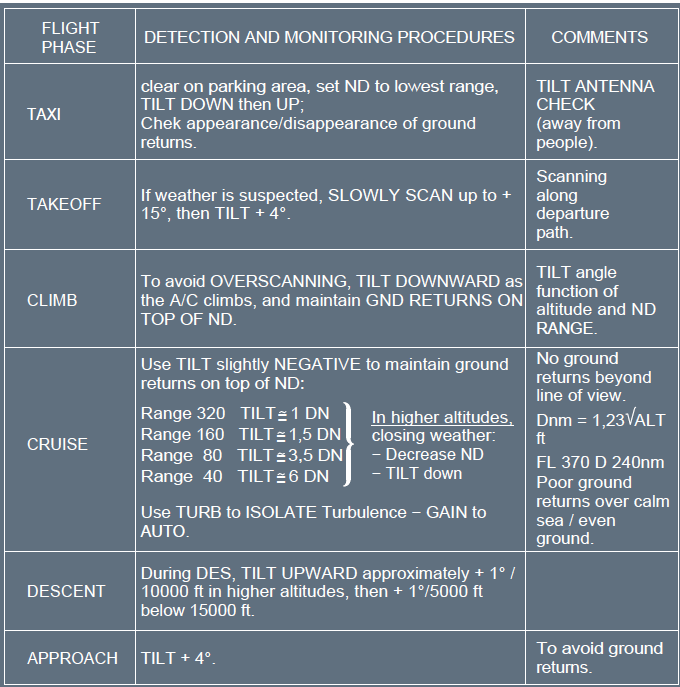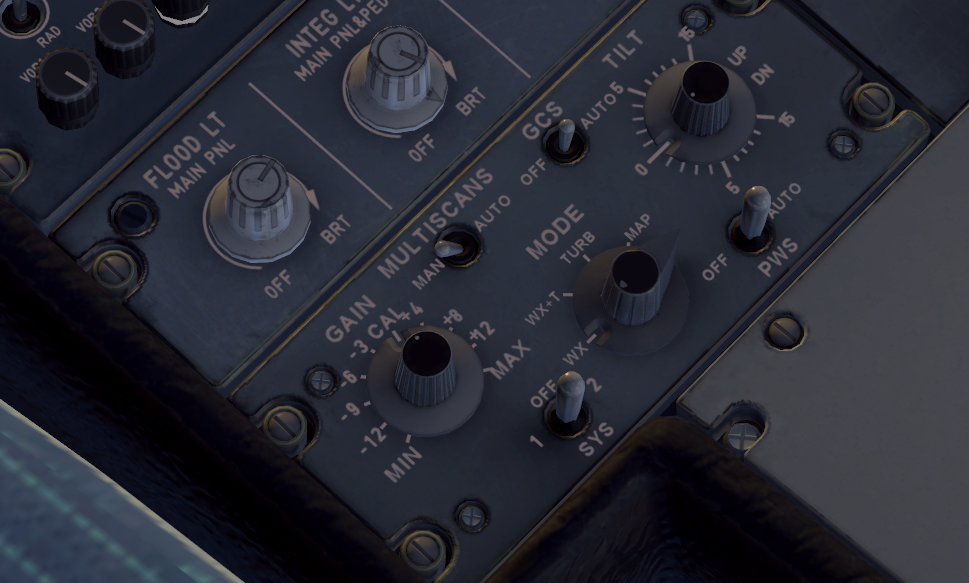- UID
- 42579
- 注册时间
- 2017-7-5
- 在线时间
- 小时
- 最后登录
- 1970-1-1
- 精华
- 阅读权限
- 50
- 听众
- 收听
 已绑定手机 已绑定手机
|
本帖最后由 babyfan 于 2019-10-15 21:25 编辑


The weather radar has two main functions:
• Weather detection
• Mapping.
Weather detection is the primary function. For weather detection, the radar detects precipitation droplets. The strength of the echo is in proportion to the droplet size,composition and quantity (e.g. the reflection of water particles is five times greater than ice particles of the same size). Therefore, the weather radar does not detect weather that has small droplets (e.g. clouds or fog), or that does not have droplets (e.g. clear air turbulence).
Mapping is the secondary function. For mapping, the echo takes into account the difference between incoming and outgoing signals. Any significant difference in the signal
is easily mapped (e.g. mountains or cities), but a small difference in the signal is not mapped (e.g. calm sea or even ground).
TILT
”Tilt” is the angle between the antenna radar and the horizon, irrespective of the aircraft’s pitch and bank angles. The antenna stabilizes by using IRS data.

To help avoid weather, it is important to efXXXtively manage the tilt, taking into account the flight phase and the ND range.Usually, it is the appropriate tilt value that provides ground returns on the top of the ND. In case of overscanning, a cell may not be detected or may be underestimated, when the radar beam scans the upper part of the cell. This occurs because, at high altitude,this cell may have ice particles, and therefore the reflection of these particles is weak.If AUTO TILT function is installed, selecting AUTO ensures a proper tilt management
along the flight.
GAIN
Gain control is mostly used in AUTO/CAL mode. The detection or evaluation of cells will always start in AUTO/CAL gain mode. However, the gain may be manually tuned to detect the strongest part of a cell displayed in red on the ND. If the gain is slowly reduced, the red areas (level 3 return) will slowly become yellow areas (level 2 return), and the yellow areas will become green areas (level 1). The last part of the cell to turn yellow is the strongest area.The gain must then be reset to AUTO/CAL mode.
MODE
The operation modes are WX, WX+T, TURB, MAP.WX+T or TURB modes are used to locate the wet turbulence area. TURB mode detects wet turbulence within 40 nm, and is not afXXXted by the gain. TURB mode should be used to isolate turbulence from precipitation.
GCS (FF320没有模拟)
The Ground Clutter Suppression (GCS) operates in WX mode, and inhibits the ground echoes on the ND.It is sometimes difficult to differentiate between weather and ground returns. A
change in tilt rapidly changes the shape and color of ground returns and eventually makes them disappear. This is not the case for weather.
RCT
The React (RCT) function is used temporarily to help detect weather or buildups beyond of the weather already detected.
PWS(FF320没有模拟)
Refer to SI-010 WINDSHEAR on adverse weather.
Note: It is difficult to differentiate between weather returns and ground returns: A change in TILT causes the shape and color of ground returns to change rapidly.These ground returns eventually disappear. This is not the case for weather returns.
请大家自行翻译吧!
|
|